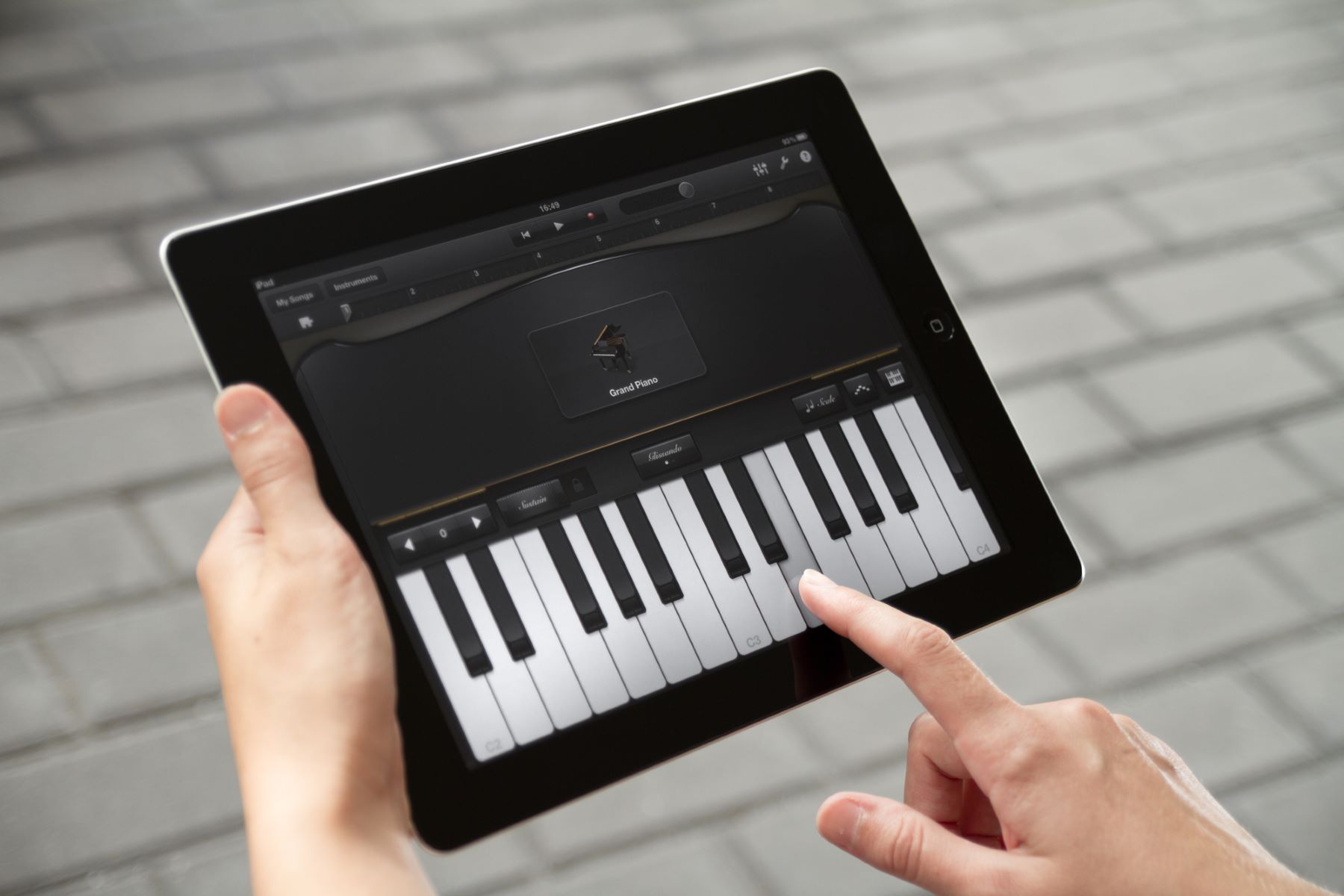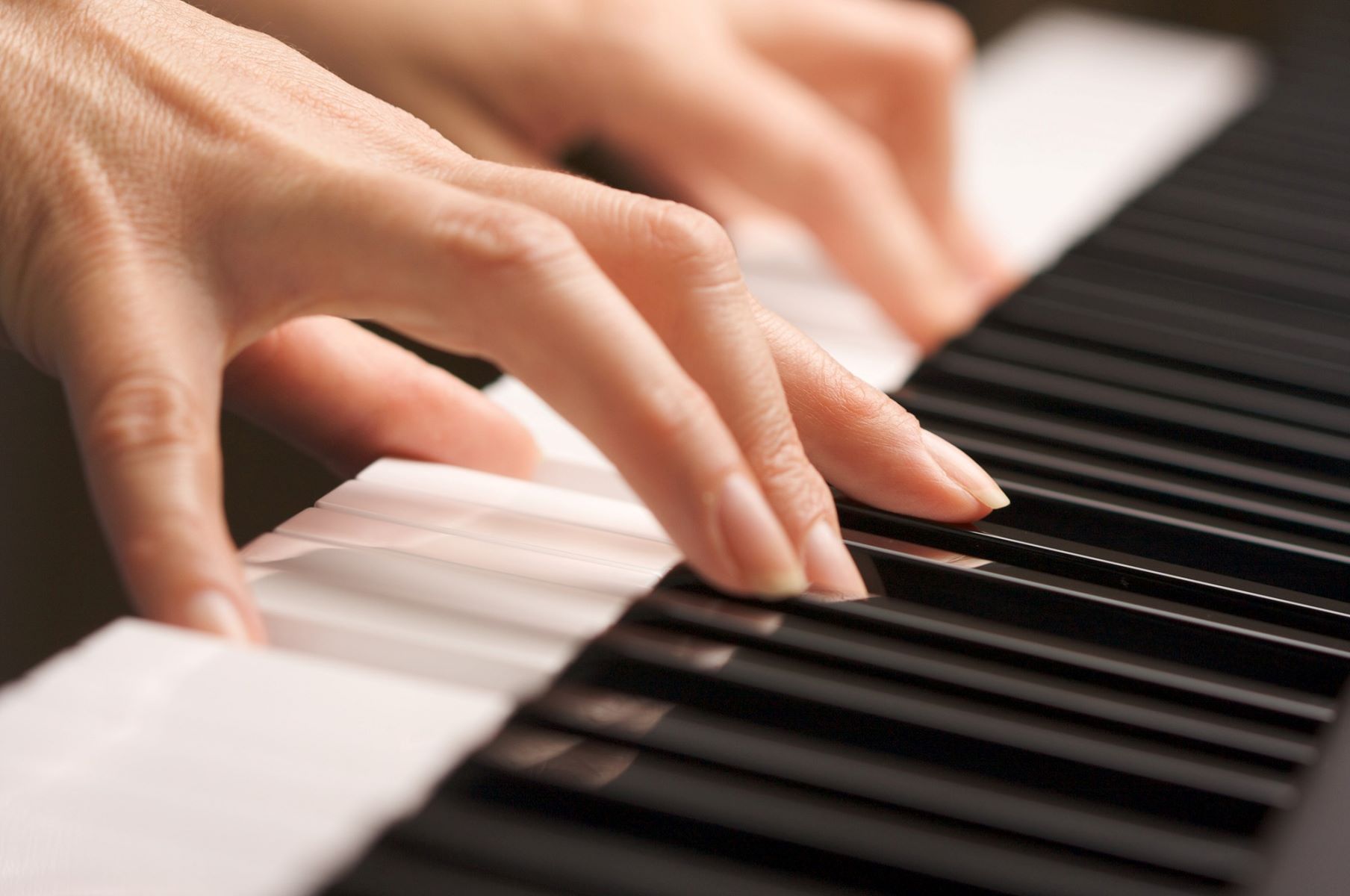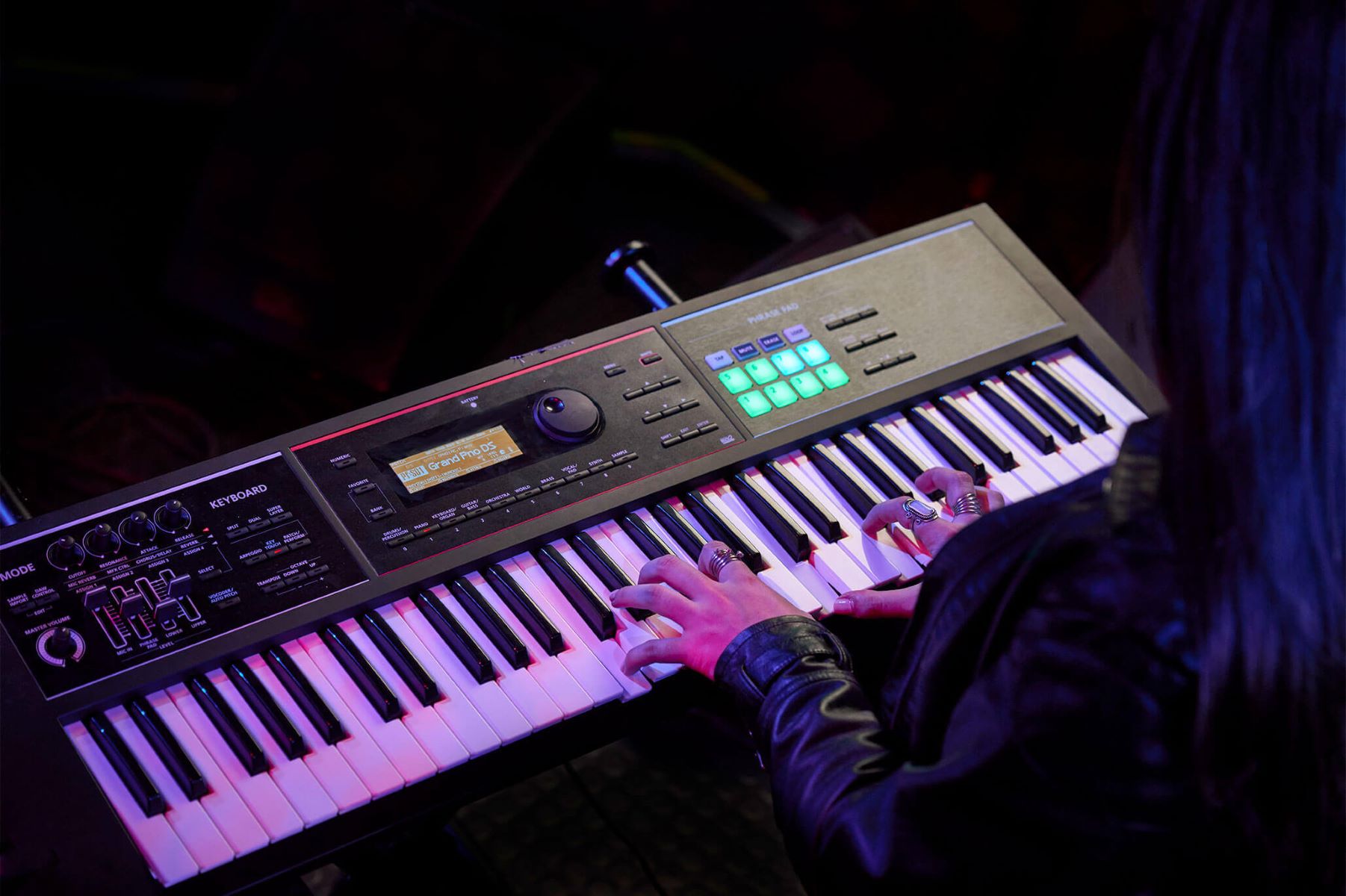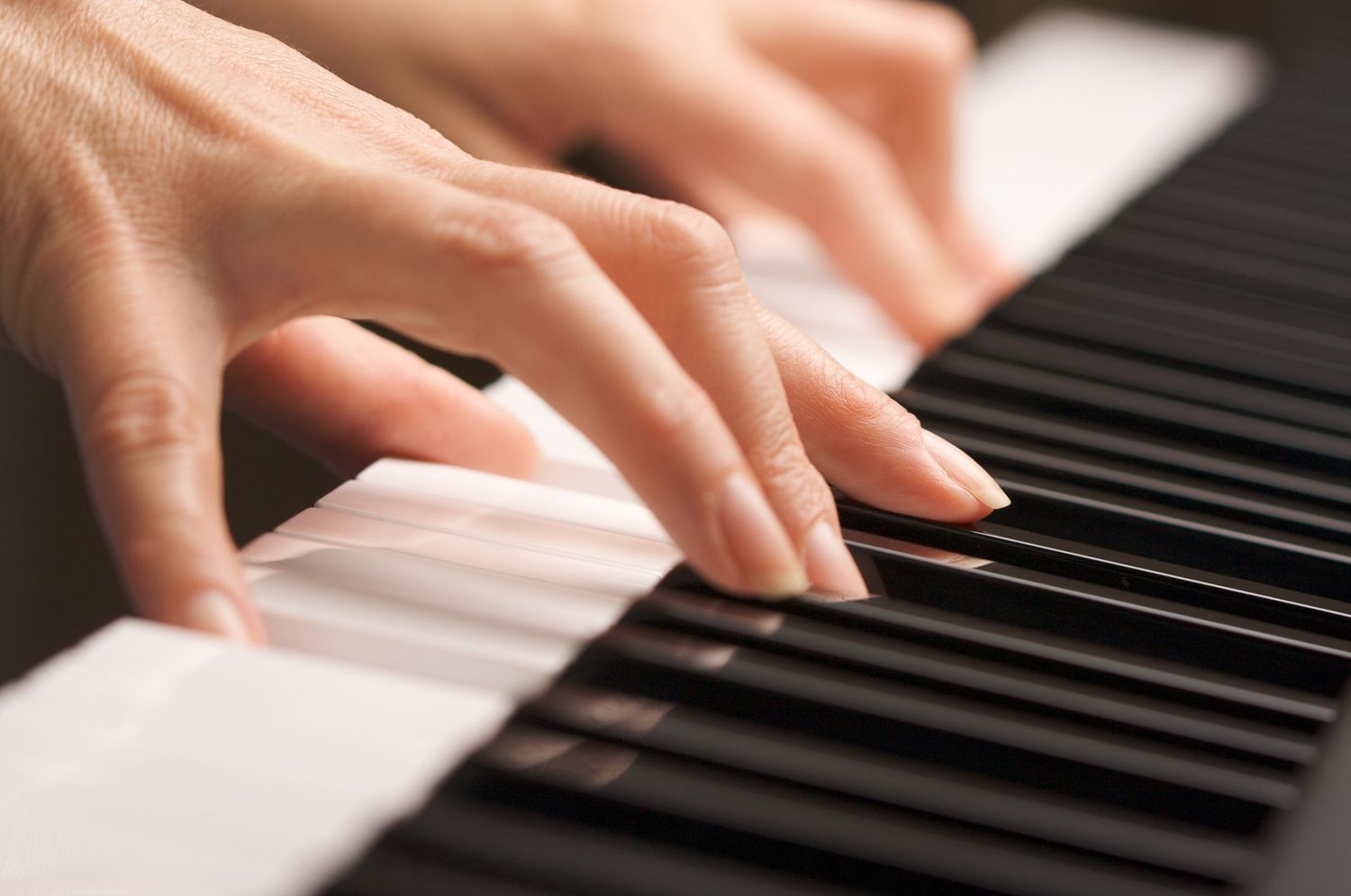Home>Events & Info>Chamber Music>How To Learn Piano Part In Chamber Music
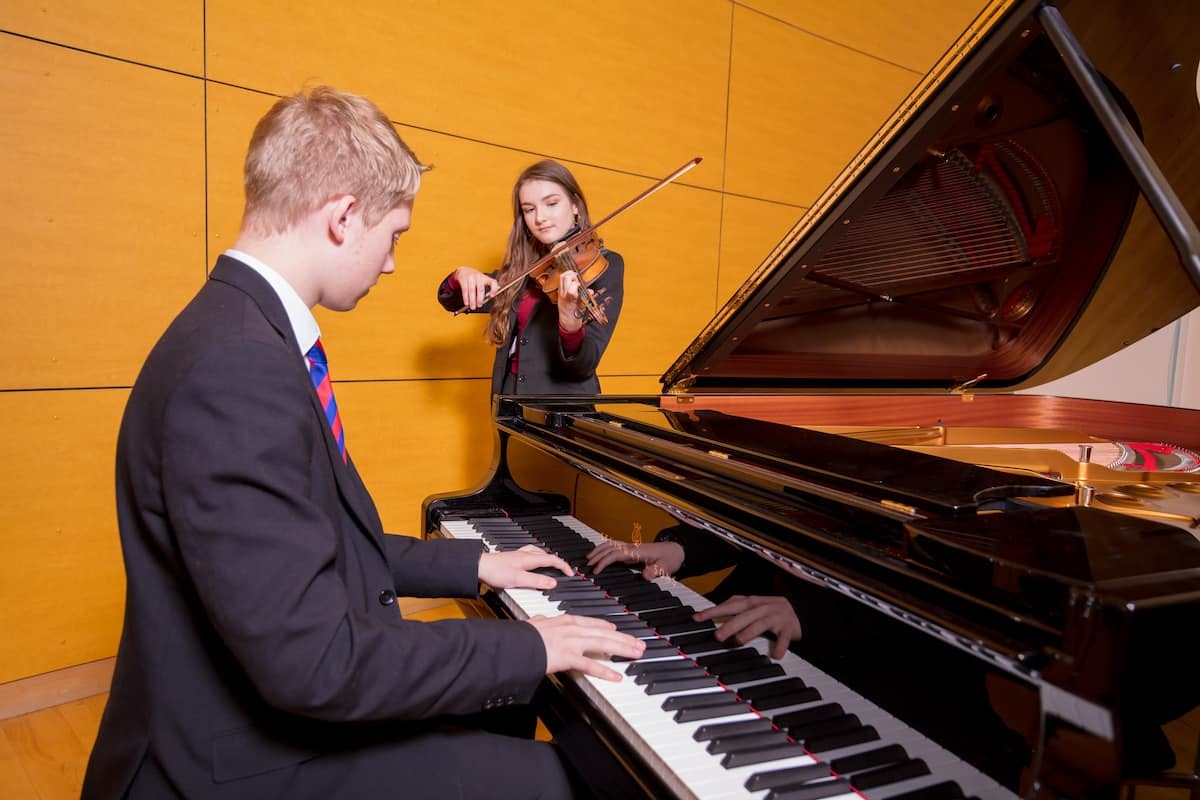

Chamber Music
How To Learn Piano Part In Chamber Music
Published: January 5, 2024
Learn how to play a captivating piano part in chamber music and enhance your musical skills in this comprehensive guide. Discover the intricacies of chamber music with expert tips and techniques.
(Many of the links in this article redirect to a specific reviewed product. Your purchase of these products through affiliate links helps to generate commission for AudioLover.com, at no extra cost. Learn more)
Table of Contents
- Introduction
- Choosing the Right Chamber Music Piece
- Understanding the Role of the Piano in Chamber Music
- Developing Sight-Reading Skills
- Practicing with Other Instruments
- Paying Attention to Dynamics and Balance
- Listening to Professional Recordings
- Communicating and Collaborating with Other Musicians
- Performing in a Chamber Music Setting
- Conclusion
Introduction
Welcome to the world of chamber music, where the intricacies of musical collaboration come to life. Chamber music is a genre that showcases the beauty of small ensembles, typically consisting of two to nine musicians. In this intimate setting, the piano plays a crucial role, providing harmonic support, melodic lines, and rhythmic stability.
If you’re a piano enthusiast looking to dive into the world of chamber music, you’re in for an exciting musical journey. Not only will you have the opportunity to explore a vast repertoire of stunning compositions, but you’ll also develop valuable skills in collaboration, communication, and sight-reading.
Choosing the right chamber music piece is the first step towards your piano exploration. Consider your skill level, interests, and the instrumentation of the ensemble you’ll be playing with. Whether it’s a classical sonata, a lush romantic quartet, or a contemporary piece, pick something that resonates with you and your fellow musicians.
Understanding the role of the piano in chamber music is crucial to shaping your musical interpretations. Unlike in solo piano works, where you have complete control over every aspect of the performance, chamber music requires listening and responding to other instruments. The piano can serve as a soloist, a supportive accompanist, or even take on a more equal role with other instruments.
Developing sight-reading skills is essential for any chamber musician. Since rehearsals are often limited, being able to read music fluently and accurately will save time and allow for smoother collaborations. Practice sight-reading exercises regularly to improve your reading proficiency and become comfortable with different musical styles and notation.
Another critical aspect of chamber music is practicing with other instruments. This is where the true magic of collaboration happens. Take the time to rehearse with your ensemble regularly, listening attentively to each other’s parts and finding the balance between instruments. Experiment with different ensemble formations to understand how the piano interacts with different instruments.
When playing chamber music, paying attention to dynamics and balance is crucial. Unlike in solo piano works, where you have full control over the interpretation, chamber music involves coordinating dynamics and balance with other musicians. Use your technical skills to adjust the volume of your playing and create a balanced sound within the ensemble.
Choosing the Right Chamber Music Piece
When embarking on your journey into the world of chamber music as a pianist, choosing the right piece is essential. The repertoire is vast, ranging from classical compositions by Mozart and Beethoven to modern works by contemporary composers. Here are some important factors to consider when selecting a chamber music piece:
- Skill Level: Consider your own proficiency as well as that of your collaborators. If you’re a beginner, you may want to start with simpler pieces that have fewer technical demands. As you progress, you can explore more challenging compositions that push your boundaries.
- Instrumentation: Pay attention to the instruments that make up the ensemble. Chamber music can involve various combinations, such as piano trios, string quartets, or woodwind quintets. Choose a piece that fits the instruments you’ll be playing with to ensure a cohesive and balanced sound.
- Genre and Style: Chamber music encompasses a wide range of genres, including Classical, Romantic, and Contemporary. Consider your personal preferences and interests when selecting a piece. Do you prefer the elegance of a Mozart sonata, the emotional depth of a Schubert quintet, or the experimental nature of a contemporary composition?
- Length and Complexity: Take into account the length and complexity of the piece. Longer compositions may require more time and effort to master, while highly intricate works may present technical challenges. Evaluate your available practice time and choose a piece that aligns with your commitment and abilities.
Once you have considered these factors, it’s time to explore the repertoire. Familiarize yourself with different composers and their chamber music compositions. Listen to recordings, attend concerts, and seek recommendations from fellow musicians or music teachers. Additionally, browsing sheet music catalogs or online platforms dedicated to chamber music can help you discover new pieces that catch your interest.
Remember that the goal is not just to find a piece that aligns with your technical abilities, but also one that excites and inspires you. Choosing a chamber music piece that speaks to you will fuel your motivation and make the learning process more enjoyable.
As you progress in your chamber music journey, don’t be afraid to explore different styles and expand your repertoire. The more diverse your musical experiences are, the richer your understanding of chamber music will be. Embrace the challenges, embrace the beauty, and embrace the joy that comes with playing chamber music on the piano.
Understanding the Role of the Piano in Chamber Music
As a pianist in chamber music, it is essential to grasp the unique role the piano plays in this ensemble setting. Unlike in solo piano works, where the piano takes center stage, chamber music requires a more collaborative approach. Here are some key aspects to consider:
- Harmonic Support: One of the primary roles of the piano in chamber music is providing harmonic support to the ensemble. The piano often plays the chords and bass lines that establish the tonal foundation of the piece. Pay attention to the harmonies and ensure that your playing supports and enhances the overall sound.
- Melodic Lines: While other instruments may take the lead in melodic passages, the piano still has the opportunity to shine with its own melodic lines. Be attentive to the moments when the piano has a solo or shares the melody with another instrument. Bring out the expressiveness and nuances of these melodic phrases.
- Rhythmic Stability: As the heartbeat of the ensemble, the piano provides rhythmic stability. Practice with a metronome to develop a solid sense of rhythm and ensemble timing. Pay attention to your interactions with other instruments, ensuring that you maintain a steady tempo and support the overall rhythmic flow.
- Accompaniment: In many chamber music pieces, the piano serves as an accompaniment instrument, supporting and enhancing the melodies of other instruments. This requires sensitivity and the ability to adjust your dynamics, phrasing, and articulation to complement the other musicians. Listen carefully to the ensemble, finding the sweet spot between supporting without overpowering.
- Equal Collaboration: In certain chamber music works, the piano shares an equal role with other instruments, creating a more balanced and interactive ensemble. Embrace these opportunities to communicate and collaborate closely with your fellow musicians. Explore the interplay between the piano and other instruments, trading melodies, and responding to each other’s musical ideas.
Developing a keen sense of listening is crucial for understanding the role of the piano in chamber music. Actively listen to the other instruments, both in rehearsals and performances, and adjust your playing accordingly. Remember that chamber music is a conversation among musicians, and your contributions should enhance the musical dialogue.
As you dive into your chosen chamber music piece, study the score thoroughly. Analyze the interactions between the piano and other instruments, noting passages where the piano plays a supporting role and moments where it takes the spotlight. Explore the expressive possibilities, experimenting with different dynamics, articulations, and phrasing to bring the music to life.
By understanding the multifaceted role of the piano in chamber music, you will be able to contribute effectively to the ensemble and create captivating, harmonious performances. Embrace the collaborative nature of chamber music, and let the piano be your gateway to a rich and fulfilling musical journey.
Developing Sight-Reading Skills
When it comes to chamber music, strong sight-reading skills are a valuable asset. Since rehearsals may be limited, being able to read music fluently and accurately will allow for more productive collaborations. Here are some tips to help you develop your sight-reading abilities:
- Consistent Practice: Make sight-reading a regular part of your practice routine. Set aside dedicated time each day to work on reading unfamiliar music. By consistently exposing yourself to new pieces, you will gradually improve your ability to quickly process and interpret written music.
- Start with Simpler Pieces: Begin with simpler chamber music pieces that are within your comfort zone. Choose compositions that have straightforward rhythms, limited technical demands, and familiar tonalities. As you gain confidence, gradually increase the difficulty level of the pieces you practice sight-reading.
- Focus on Rhythm: Pay special attention to the rhythm while sight-reading. Counting out loud or using a metronome can help you stay on track. Start by reading rhythms without playing the notes, ensuring accuracy before adding the pitches. This approach allows you to internalize the rhythmic patterns and maintain a steady tempo.
- Scan the Score: Before playing, take a moment to scan the score. Look for key signatures, time signatures, repeat signs, and any other markings that may impact your interpretation. Familiarize yourself with the overall structure of the piece to anticipate potential challenges or recurring musical ideas.
- Read Ahead: Train yourself to read ahead of the music you’re currently playing. This helps you anticipate upcoming notes and rhythms, allowing for a smoother and more confident performance. Avoid getting fixated on one measure and instead maintain a steady flow of reading and playing.
- Embrace Mistakes: Sight-reading is about learning to quickly adapt and recover from mistakes. Rather than dwelling on errors, keep going and focus on maintaining the rhythm and overall flow of the music. Use mistakes as learning opportunities to improve your sight-reading skills.
- Explore Various Styles and Genres: Expand your sight-reading repertoire by exploring music from different styles and genres. This will expose you to a wider array of musical notation, helping you become more comfortable with diverse musical elements such as ornaments, chord symbols, and unconventional notation.
Remember, the more you practice sight-reading, the more proficient you will become. Over time, you’ll build a mental database of patterns and musical structures, allowing you to quickly recognize common rhythms, intervals, and harmonic progressions. As a result, your sight-reading skills will become more intuitive and accurate.
Don’t be discouraged by initial challenges. Sight-reading is a skill that develops gradually, and each practice session brings you one step closer to mastery. Embrace the process, stay consistent, and celebrate every small improvement. With time and dedication, you’ll become a confident and competent sight-reader, enhancing your chamber music performances and collaborations.
Practicing with Other Instruments
In chamber music, collaborating and practicing with other instruments is essential for creating a cohesive and expressive ensemble. Here are some tips to help you make the most out of your practice sessions with other instruments:
- Active Listening: When rehearsing with other instruments, listen attentively to their parts. Pay attention to their melodies, dynamics, and articulations. Understanding the roles of each instrument will help you find your place in the ensemble and create a balanced and unified sound.
- Communication: Establish clear communication with your fellow musicians. Discuss musical interpretations, tempo, phrasing, and any specific concerns or ideas. Effective communication fosters a collaborative environment and ensures that everyone is on the same page.
- Flexibility: Be open to making adjustments and adapt your playing to complement the other instruments. This may involve modifying dynamics, adjusting the balance between instruments, or accommodating tempo changes. Collaboration requires flexibility to create a cohesive musical performance.
- Ensemble Formation: Experiment with different ensemble formations to understand how the piano interacts with different instruments. Playing both as an accompanist and as an equal partner will enhance your understanding of chamber music dynamics. Take turns in leading and supporting, allowing for a balanced musical conversation.
- Timing and Coordination: Develop a sense of timing and coordination by closely following the other musicians. Pay attention to cues, entrances, and transitions between sections. Practice ensemble passages repeatedly to improve synchronicity and create a tight-knit musical performance.
- Sectional Practice: Consider dividing the ensemble into smaller groups during rehearsals. This allows you to focus on specific sections that require additional attention. Practice together with other instrumentalists who share similar parts, allowing for detailed work on complex passages and achieving precise ensemble synchronization.
- Respect and Collaboration: Treat each member of the ensemble with respect and appreciation. Collaboration requires mutual respect for each musician’s ideas, contributions, and differences. Embrace the diversity of musical perspectives and work together towards a common musical goal.
Practicing with other instruments goes beyond playing your own part. It involves actively engaging with the music and responding to the interpretations and styles of your fellow musicians. Embrace the opportunity to learn from others and explore different musical approaches.
Record your rehearsals and listen back to identify areas for improvement. This will help you fine-tune your playing, adjust dynamics, refine phrasing, and align your interpretation with the ensemble. By actively listening to these recordings, you’ll gain valuable insights into the overall ensemble blend and make necessary adjustments.
Remember, practicing with other instruments is a collaborative process that requires patience, attentiveness, and a willingness to adapt. Embrace the challenges and rewards that come with working as part of an ensemble, and enjoy the rich and vibrant musical journey that chamber music offers.
Paying Attention to Dynamics and Balance
In chamber music, dynamics and balance play a crucial role in creating a compelling and expressive performance. As a pianist, it’s essential to pay close attention to these elements to ensure a harmonious blend with the other instruments. Here are some tips for mastering dynamics and balance in chamber music:
- Score Analysis: Study the score thoroughly to understand the composer’s intended dynamics and markings. Pay attention to any indications of crescendos, decrescendos, piano, forte, or any other dynamic instructions. This analysis will guide your interpretation and help you achieve the desired balance throughout the piece.
- Listening and Mimicking: Listen to professional recordings of the piece you’re working on. Pay attention to how the dynamics are executed and how the balance is achieved between instruments. Mimic the ideas and techniques employed by experienced performers to bring out the subtleties of the music.
- Communication with the Ensemble: Discuss and communicate with your fellow musicians about dynamics and balance. Share your interpretations and ideas while being open to their suggestions. Collaboratively decide on the overall dynamic shape of the piece and how individual instruments can contribute to the desired balance.
- Controlled Technique: Develop control over your technique to execute dynamics accurately. Practice piano and forte passages separately, paying attention to the transition and gradation between the two. Work on playing softly without sacrificing clarity and projecting confidently without overpowering the other instruments.
- Listening and Responding: Pay attention to the dynamics and phrasing of other instruments while playing. Respond to their musical gestures and adapt your playing accordingly. Find the right balance between blending with the ensemble and standing out when called for, all while maintaining a cohesive sound.
- Balance Adjustment: Experiment with different levels of dynamics to achieve balance within the ensemble. Adjust your playing by adding or reducing volume as needed. Be flexible and responsive to the acoustics of the performance space and the dynamics of the other musicians to create a well-balanced sound.
- Subtle Articulation: Explore articulation techniques to enhance dynamic contrasts and clarity. Use lighter touch to create delicate passages and emphasize certain notes or phrases. Practice varying the touch and weight of your fingers to control the sound and achieve the desired dynamic expression.
Remember that dynamics and balance are essential for conveying the emotional depth and musicality of chamber music. They create the ebb and flow, tension, and release within the performance. By mastering dynamics and balance, you can highlight the nuanced nuances of the music, creating a mesmerizing and engaging experience for both the performers and the audience.
Take the time to fine-tune the dynamics and balance through dedicated practice and attentive listening. Be sensitive to the interactions between the piano and other instruments, finding the delicate equilibrium that allows the music to soar. With dedication and meticulous attention, you can bring out the full vibrancy and expressive potential of the chamber music repertoire.
Listening to Professional Recordings
Listening to professional recordings can be a valuable tool for pianists looking to enhance their understanding and interpretation of chamber music. By immersing yourself in recordings by accomplished musicians, you can gain valuable insights into phrasing, dynamics, interpretation, and overall musicality. Here are some reasons why listening to professional recordings is beneficial:
- Artistic Inspiration: Professional recordings can serve as a source of inspiration, igniting your imagination and sparking new ideas for your own performances. Listening to exceptional musicians can push you to explore different interpretative choices and infuse your playing with greater expressiveness.
- Understanding the Overall Interpretation: Professional recordings offer a glimpse into the larger context of a chamber music piece. By listening to the entire ensemble, you can better understand the balance and interaction between instruments, allowing you to adapt your playing accordingly.
- Interpretive Ideas: Experienced performers often bring their unique interpretations to the music, offering fresh insights and ideas that you may not have considered. Studying various interpretations can expand your musical horizons and help you develop a more personal and nuanced approach to the piece.
- Technical Inspiration: Listening to skilled pianists can provide technical inspiration. Observe their use of fingerings, pedaling techniques, and overall control of the instrument. Take note of their effortless execution and incorporate their techniques into your own practice regimen.
- Styling and Expression: Professional recordings can expose you to different stylistic traditions and interpretations of a piece. You can explore how different musicians use dynamics, articulation, and phrasing to convey the spirit and character of the music. Incorporate these stylistic elements into your own playing to bring greater depth and authenticity to your performances.
- Aural Imagination: Listening to professional recordings nurtures your aural imagination, helping you internalize the sound and emotional essence of the music. This aural reference becomes a guide for your own interpretation and expression, enabling you to immerse yourself fully in the mood and atmosphere of the piece.
To make the most out of listening to professional recordings, actively engage with the music. Take notes on specific moments or passages that inspire you. Analyze the performers’ choices by identifying their phrasing, dynamics, and stylistic interpretations. Use these observations as a reference point for your own practice and exploration of the piece.
While professional recordings can provide valuable guidance, it’s important to remember that they are artistic interpretations and that each musician brings their own unique perspective to the music. It’s essential to develop your own individual interpretation while taking inspiration from the recordings.
Listening to professional recordings should be a regular part of your musical journey. As you continue to explore chamber music repertoire, seek out recordings by renowned artists and immerse yourself in the diverse interpretations and performances available. Through attentive and thoughtful listening, you can refine your understanding of chamber music and develop a more nuanced and informed approach on the piano.
Communicating and Collaborating with Other Musicians
In chamber music, effective communication and collaboration are the pillars of a successful ensemble performance. Here are some key aspects to consider when working with other musicians:
- Open and Clear Communication: Good communication is essential for a cohesive ensemble. Share your musical ideas, interpretations, and concerns openly with your fellow musicians. Listen attentively to their input and be receptive to their perspectives. Establishing clear lines of communication ensures that everyone is working towards the same musical goals.
- Active Listening: Actively listen to the other musicians during rehearsals and performances. Pay close attention to their playing, phrasing, dynamics, and musical ideas. By listening attentively, you can respond and adapt your own playing to create a harmonious musical dialogue.
- Respecting Musical Differences: Each musician brings their own unique perspective and musical ideas to the ensemble. Respect and appreciate these differences, as they contribute to the richness and diversity of the music-making process. Embrace the opportunity to learn from one another and explore the various interpretations that arise from collaboration.
- Flexibility: Collaboration requires flexibility and adaptability. Be open to trying different approaches and interpretations. Adjust your playing to accommodate the musical ideas and needs of the ensemble. Flexibility promotes a balanced and unified sound, allowing for a seamless musical performance.
- Rehearsal Etiquette: Establish a positive and respectful rehearsal environment. Arrive prepared and punctual, ensuring you have a good grasp of your own part. Be patient, supportive, and considerate of your fellow musicians. This fosters a collaborative atmosphere where everyone feels comfortable expressing their ideas and making valuable contributions to the ensemble.
- Shared Responsibility: Collaborative chamber music is a collective effort. It’s important to share responsibility, taking ownership of your part while also considering the needs of the ensemble. Be attentive to the balance between instruments, adjusting your playing as necessary to maintain a cohesive and unified sound.
- Musical Decision-Making: When making musical decisions as a group, strive for consensus. Discuss interpretations, tempos, dynamics, and other musical elements to arrive at a unified approach. Be open to compromise and find common ground that reflects the collective vision of the ensemble.
- Support and Encouragement: Encourage and support your fellow musicians. Celebrate each other’s accomplishments and offer constructive feedback. Creating a nurturing and positive environment builds trust and strengthens the ensemble’s chemistry.
Remember, chamber music is a collaborative art form that thrives on communication, compromise, and collective creativity. Embrace the diversity of ideas and perspectives within the ensemble, as they contribute to a more vibrant and engaging musical experience.
Throughout the rehearsal process, genuine listening, respectful communication, and shared decision-making will lead to a unified and cohesive ensemble performance. By fostering a collaborative spirit, you can create awe-inspiring chamber music performances that leave a lasting impact on both the performers and the audience.
Performing in a Chamber Music Setting
Performing in a chamber music setting is a unique and rewarding experience for pianists. Whether you’re playing in a small intimate venue or on a grand stage, here are some tips to help you deliver a memorable chamber music performance:
- Preparation: Thoroughly prepare your part well in advance of the performance. Practice diligently, ensuring that you are comfortable with the technical aspects of the music and have a deep understanding of the interpretation. Rehearse with the ensemble to solidify your musical communication and coordination.
- Listening and Reacting: Maintain an acute sense of listening during the performance. Be responsive to the dynamics, phrasing, and nuances of the other musicians. Adapt your playing in real-time, allowing for a cohesive and harmonious musical dialogue. Keep your focus on the music and engage in the present moment.
- Stage Presence: Develop a confident and engaging stage presence. Project your personality through your playing, connecting with the audience on an emotional level. Be aware of your body language and gestures, enhancing the visual aspect of your performance. Create a captivating presence that draws the audience into the music.
- Creating Balance: Pay attention to the balance between instruments during the performance. Be conscious of dynamics, adjusting your volume to ensure a harmonious blend within the ensemble. Use your technical skills to create balance, supporting and enhancing the melodies of the other instruments while allowing your own playing to shine when appropriate.
- Musical Expression: Express the emotional depth and musicality of the chamber music piece. Bring out the nuances, shades of dynamics, and subtleties of the music through your interpretation. Use articulation, phrasing, and touch to convey the composer’s intentions and elicit an emotional response from the audience.
- Communicating with the Audience: Engage with the audience through your performance. Establish a connection by conveying your passion and enthusiasm for the music. Share brief insights into the piece, its historical background, or interesting musical elements during the performance. This personal touch helps the audience feel more involved and connected to the music.
- Embracing the Unexpected: Be prepared for unexpected moments during the performance. Keep calm and continue playing gracefully, even if there are minor mistakes or unforeseen circumstances. Professionalism is demonstrated by your ability to adapt and recover seamlessly.
- Enjoyment and Collaboration: Above all, enjoy the experience of performing in a chamber music setting. Cherish the collaboration with your fellow musicians and embrace the beauty of making music together. Remember that chamber music is a unique opportunity to connect with others through the shared expression of music. Allow yourself to fully immerse in the performance and create a memorable musical experience for both yourself and the audience.
Remember, every chamber music performance is a chance to share your musical voice and contribute to a collective musical experience. Embrace the opportunity to connect with your fellow musicians and captivate the audience with your artistry. With preparation, attentive listening, and a genuine passion for the music, you can deliver an exceptional chamber music performance that resonates long after the final note.
Conclusion
Chamber music is a captivating and enriching genre that allows pianists to explore the beauty of collaboration and musical expression. From choosing the right piece to performing in a chamber music setting, this article has provided valuable insights into the world of chamber music and how to excel as a pianist in this setting.
By understanding the unique role of the piano in chamber music and developing sight-reading skills, you can confidently navigate through the repertoire and contribute to a harmonious ensemble. Practicing with other instruments and paying attention to dynamics and balance will help create a cohesive sound that elevates the music to new heights.
Listening to professional recordings and actively engaging with them will inspire your own interpretations, while effective communication and collaboration with fellow musicians will ensure a unified and expressive performance. Finally, when it comes time to perform in a chamber music setting, thorough preparation, stage presence, and a deep connection with the music and the audience will bring your performance to life.
Embrace the beauty of chamber music, and let your passion and dedication shine through in every note you play. As you continue on your journey as a chamber music pianist, constantly seek growth and artistic expression. Chamber music offers a unique platform for collaboration, creativity, and musical communication that will captivate both performers and listeners alike.
So, go forth and immerse yourself in the world of chamber music. Embrace the challenges, cherish the collaborations, and let the music resonate through your fingertips, creating a profound and lasting impact on your musical journey.


